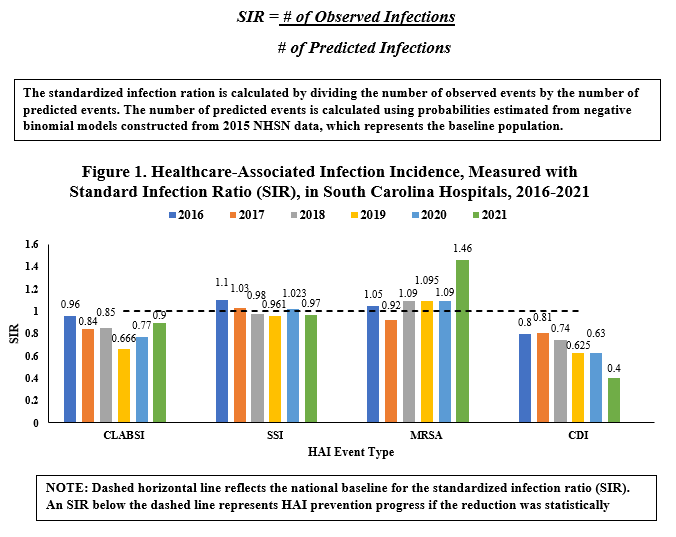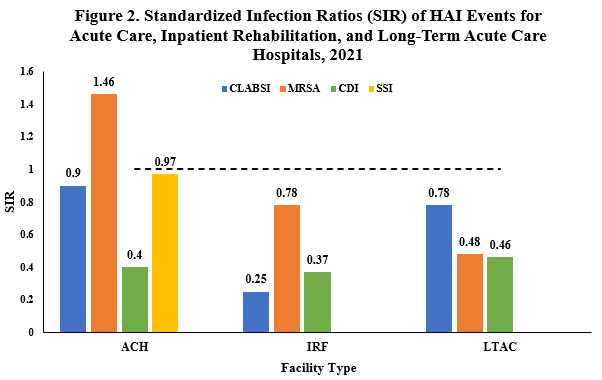To ensure you’re receiving the most up-to-date and accurate information, please choose the correct agency from the homepage. The DHEC website is no longer being updated and will be permanently unavailable Dec. 31, 2024.
The Hospital Infections Disclosure Act (HIDA), passed by the South Carolina General Assembly in May 2006, requires hospitals to report specific types of infections to DHEC. DHEC must then compile and analyze the data to provide a final, validated report to the General Assembly by April 15 of each year. DHEC then publishes that report to its website. Data from Acute Care Hospitals (ACH), Inpatient Rehabilitation Facilities (IRF), Long-Term Acute Care Hospitals (LTAC) and Critical Access Hospitals (CAH), are reported annually, and include required reporting of Surgical Site Infections (SSI), Central Line Associated Blood Stream Infections (CLABSI), Clostridiodes Difficile Infections (CDI) Lab ID Events, Methicillin Resistant Staphylococcus Aureus (MRSA) Lab ID Events, Catheter Associated Urinary Tract Infections (CAUTI), Ventilator Associated Events (VAE), and Pediatric Ventilator Associated Events (PedVAE). CAUTI, VAE, and PedVAE are not published in the annual report.
2021 HIDA Report
Since 2016, South Carolina has successfully reported Standardized Infection Ratios (SIR) less than 1.0 for CLABSI and CDI Lab ID events, seen in Figure 1. Surgical Site Infections (SSI) SIRs have been trending down since 2016, and in 2021 the SIR was less than 1.0. The increases seen in the Methicillin-Resistant Staphylococcus Aureus (MRSA) SIR are reflected nationally and have largely been attributed to the COVID-19 pandemic and shifting demands in healthcare settings during that time. DHEC and the HIDA Committee remain committed to making strides to reach these established goals, supporting our hospital partners providing support and resources to improve the health of South Carolinians and provide better and more timely access to care.
In 10-year cycles, The Department of Health and Human Services (DHHS) publishes national SIR Reduction Target goals (Table 1), to identify areas to strive to improve health and well-being. These Healthy People 2030 goals illustrate target SIR reduction goals centered around CDI and MRSA LabID Events.
| Measure | 2020 Target Reduction / Target SIR | 2030 Target Reduction / Target SIR |
|---|---|---|
| CLABSI | 50% / 0.50 | Removed |
| SSI | 30% / 0.70 | Removed |
| Hospital-onset CDI | 30% / 0.70 | 30% / 0.70 |
| Hospital-onset MRSA | 50% / 0.50 | 50% / 0.50 |
The 2021 SIRs for HAI event types required for reporting by HIDA are presented in Figure 2 and stratified by facility type. The dotted line represents the baseline result of an SIR equal to 1.0. Acute Care Hospitals reported an SIR of 1.46 for MRSA Lab ID events, whereas IRFs and LTACs reported at 0.78 and 0.48, respectively. All HAI event types reflected an SIR less than 1.0, excluding MRSA Lab ID events within Acute Care Hospitals, indicating that fewer events occurred than were expected and it can be inferred that overall patient care improved.

